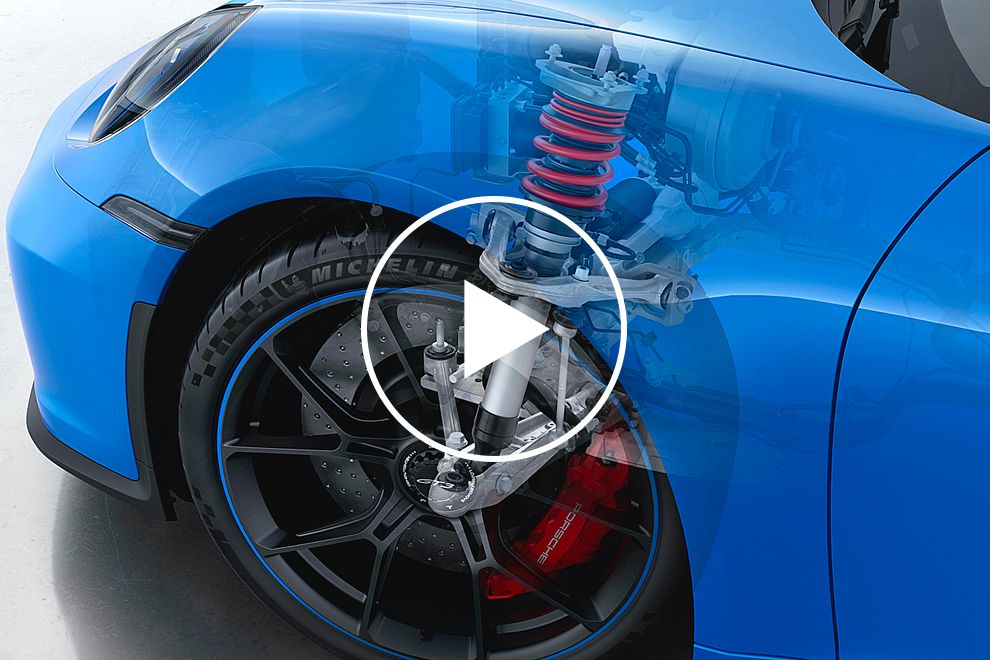
The practical example above showcases, in a nutshell, how double-wishbone suspension works, using the two control points to ensure a consistent wheel angle. The problem is that in the example above, the arms are of equal length, which results in the angle of the trash can lid (representative of a wheel) always aligning parallel with the body of the car (represented by your body). In a sports car, you don’t want the wheels to stay parallel with the car’s body but perpendicular to the road surface, maximizing the contact patch and, thus, traction.
In order to do this, engineers integrated a ‘short-long arm’ philosophy, where the upper control arm is shorter than the lower one, allowing the wheel to maintain a more upright stance throughout the entirety of the suspension travel, even if the vehicle’s body lean is excessive.
The video below, from the launch materials for the Alpine A110 shows the movement of wheels connected to a double wishbone suspension setup and how they retain their angle in relation to the road.

